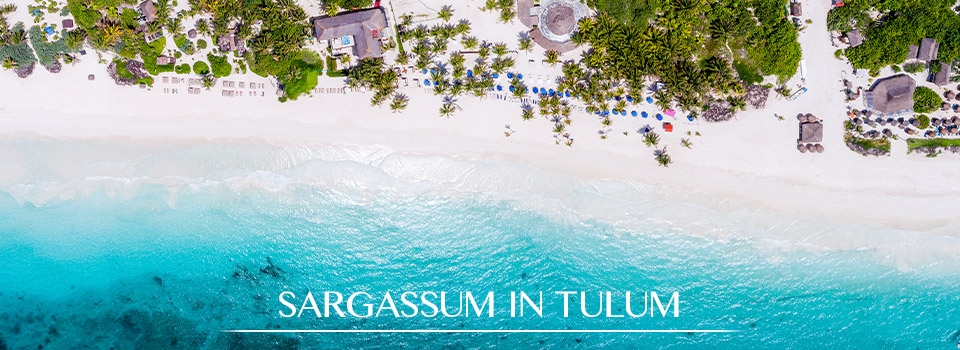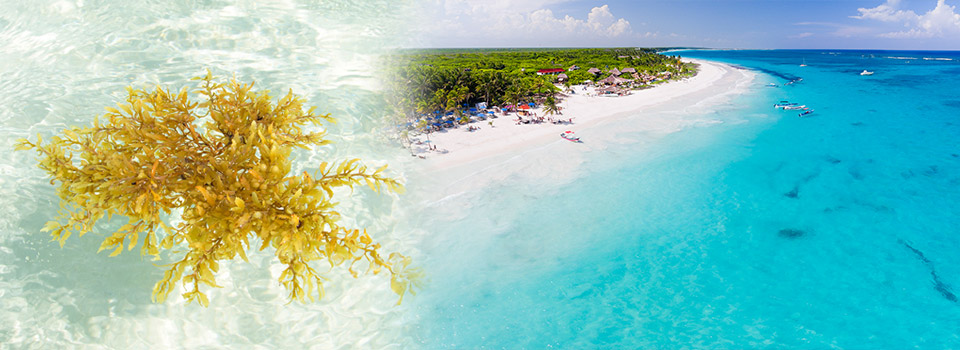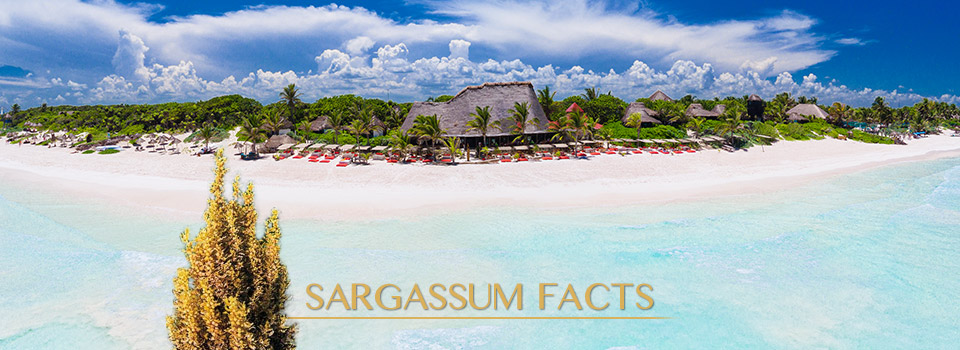Sargassum Seaweed Season Ends in Tulum and the Mexican Caribbean
9 September, 2019

Earlier this summer, Cancun and Mexico’s Riviera Maya made international tourism news after sargassum seaweed invaded beaches throughout the Caribbean. Thankfully, Quintana Roo Governor Carlos Joaquín González reports that the 2019 sargassum season has ended, leaving beaches on Mexico’s Yucatan Peninsula - where the vacation hotspots of Cancun, Playa del Carmen, Cozumel, Puerto Aventuras and Tulum are located - are once again clear of the invasive algae.
“Sargassum season is almost over and we can assure travelers and our industry partners that the beaches of the Mexican Caribbean are entirely free of sargassum,” Joaquín told Mexico News Daily last week. “There has not been a significant resurgence of the algae in recent weeks.”
It’s also important to note that warmer summer weather can naturally bring an increased amount of sargassum seaweed to beaches in Mexico located on the Caribbean coast, but multiple tracking reports have confirmed that the season has finally come to an end in 2019.
 Mexico Beaches Seaweed: Sargassum in Tulum
Mexico Beaches Seaweed: Sargassum in Tulum
According to the Quintana Roo Tourism Board, more than 83 percent of Riviera Maya beaches are now sargassum free, and the amount of the seaweed found in other areas continues to diminish daily. This is typical for the end of August, which is when the phenomenon naturally begins to recede, with or without help from man-made barriers and cleanup crews.The Cancun sargassum monitoring network also reported low levels of sargassum as of last week on beaches all along the Mexican Caribbean coast. This is fantastic news for the hotels in the Riviera Maya, as well as the wide variety of other travel and tourism-related industries located in this part of Mexico, which is known worldwide for its pristine white-sand beaches and crystal-clear turquoise waters.
 Why is There so Much Seaweed on the Beach?
Why is There so Much Seaweed on the Beach?
A surplus of nutrients and other materials that are regularly washed into the ocean from rivers and streams worldwide have caused the sargassum seaweed explosion, creating rising nutrient and nitrogen levels that naturally promote the growth of algal blooms. After washing ashore, the sargassum dies and begins the process of decomposition, releasing foul smelling gasses into the air.
Sadly, the sargassum reproduction rate we are currently experiencing goes beyond simply being an eyesore and tourism nuisance, because it also suffocates the Great Mesoamerican Coral Reef that lies just offshore from Tulum in Mexico’s Riviera Maya, resulting in the deaths of various types of fish, sea cucumbers, lobster, sea urchins and crabs.

Sargassum seaweed began reappearing on Mexico beaches from Cancun to Tulum and beyond earlier this summer, creating alarm among some officials that the influx of rotting algae would cause a dip in tourism, which is responsible for at least 8.7 percent of Mexico’s GDP each year, amounting to a $23 billion-dollar industry. Fortunately, the Mexican government and local hotel groups took swift action to clean up the beaches and also installed a variety of barriers out to sea in an effort to keep it from coming ashore.
Since the algae blooms tend to arrive sporadically, it’s important to remember that sargassum seaweed won’t affect all areas of the Mexican Caribbean coastline at one time. As a result, there are typically some areas that are being affected, while some beaches in the Riviera Maya remain virtually pristine.
“We wish to ensure that this naturally-occurring phenomenon is better understood, so the [tourism] industry, media and consumers feel informed to make smart travel decisions,” wrote the Quintana Roo Tourism Board in a recent press release.“Media reports have at times exaggerated the impacts on travelers, or falsely equated the arrival of the sargassum season with widespread issues.”
 Sargassum Facts:
Sargassum Facts:
- 17 Countries are affected annually by the seaweed, including the U.S., Mexico, Caribbean nations and several others in Central and South America.
- Mexico has led efforts to combat sargassum, by investing in new equipment, technology and other innovations to block and/or remove the seaweed.
- In 2019, some popular beaches in Mexico received zero or very little sargassum.
- Sargassum can arrive sporadically and at different times across the region.
If you’re concerned about sargassum turning up to ruin your vacation in the Mexican Caribbean, be sure to ask your hotel and travel agent to get real-time information regarding the exact locations of the seaweed in areas you wish to visit. Most importantly, don’t let sensational media reports designed to get clicks and “Likes” deter you from having the vacation of your dreams here with us at KASA Hotel Parota in Tulum!
Want to see more about one of the best hotels in Tulum? Click here to see what KASA Hotel Parota is all about!

